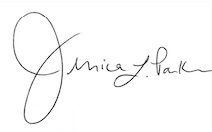10 Tips for Writing a Literature Review
Conducting a thorough review of the literature is incredibly important as an academic writer. But sometimes you might feel daunted by the enormity of the task. Following these 10 tips can help you focus your writing efforts. These tips can also help you write a literature review that moves beyond summarizing the research and toward critiquing it well.
Tip 1. Understand what a literature review is.
A literature review is a well-reasoned, evidence-based, scholarly argument that demonstrates the need for your study. While your literature review will contain a great deal of information, it is not (primarily) an informative text. Keeping this in mind at the outset can lead you toward a critique that situates your study within the scholarly discourse relevant to your research topic.
Tip 2. Write a draft of your research problem statement.
A well-written literature review thoroughly analyzes and critiques the key concepts or quantitative variables central to your research topic. These key concepts or variables are generally expressed in a problem statement, so having a problem statement drafted can help you align your literature review to your research topic. For instance, rather than writing about “Burnout in Education,” your problem statement could lead you to focus your review on “Burnout in K-12 School Leaders.” This narrowed focus makes your literature review relevant and, importantly, doable. Click here to enroll in Dissertation by Design’s free course on how to write a research problem statement.
Tip 3. Create an outline of your literature review.
Even though your outline will likely change, create a document with headings that describe the pockets of literature you will review. In the above example about burnout in school leaders, you might have a heading called “Factors Influencing Burnout.” You might already know that some factors to consider are lack of work/life balance, lack of resources, and dissatisfaction with pay and benefits. Create those subheadings. Then, follow the next tip.
Tip 4. Use your outline to guide your search of the literature.
The headings in your lit review outline can be used as keywords to search for relevant literature. Remember to document your search strategy and use synonyms. You might also locate a systematic review on your research topic, which is rich with references.
Tip 5. Organize your research articles.
We recommend using reference management software such as Citavi to organize your research articles. If that isn’t an option, create folders and save your research articles as the in-text citation (e.g., an article by Parker et al. 2021 would be saved as such). Having one folder for all of your articles is the equivalent of piling your desk with stacks of articles that you can’t remember if you have read or not. If you organize your research articles, you will be able to review all of the articles that relate to a specific topic in your literature review.
Tip 6. Use an annotation table to document relevant study information.
This step is critical to literature review success. You will search for trends, gaps, and patterns in the literature. Therefore, you need to extract relevant information from articles and group it together to analyze it. Writers often begin by sharing the results of one study, then the next, and so on, without offering up any synthesis of the literature. Synthesis is the result of analysis, and your initial analysis needs to encompass articles that are connected in some way. In the burnout example above, you may have extracted several findings that demonstrate that lack of work/life balance is a major factor in school leader burnout. You will want to state this finding clearly and review all of the articles about it together, so go ahead and group them in an annotation table at this stage.
Tip 7. Analyze your annotation table.
Once you have annotated several articles, analyze them for patterns, discrepancies, and gaps. A pattern could be a similar finding that you have noticed across several studies. It could also be a pattern of participants (e.g., the phenomenon has mostly been studied in female-identifying participants) or methodology (e.g., 10 of the 12 studies are quantitative). Often, we can infer from a pattern to identify a gap in the literature. NVivo can help you find the patterns and themes in your literature and keep you organized throughout the process of synthesizing literature.
Tip 8. Write clear and concise claims and synthesize what you learn.
So, you located a pattern, discrepancy, or gap in the literature; what next? Make sure you state your finding clearly and concisely in the form of a claim and synthesize the evidence to support the claim. For instance, “Much of the research regarding school leader burnout focuses on the reasons why school leaders burnout” is a claim. Reporting that a single author “X” found something interesting is not.
Tip 9. Place your claims and analysis of the evidence “front and center” in your writing.
As you report your findings, place your claims as topic sentences (main ideas) of the paragraphs you write. Then put the evidence you pull from your studies to support that main idea. A hallmark of well-synthesized writing is that paragraphs weave information from several studies together around a central claim. Using the MEAL plan structure (Main Idea, Evidence, Analysis, Link) can help you craft paragraphs that are cohesive and analytical — hallmarks of good literature review writing.
Tip 10. Schedule time for revision.
When you are writing your literature review, you are wielding large amounts of information, and you are likely writing in complex ways that are likely new to you. As with all writing, expect that you will need to revise your work. Schedule time and, if necessary, ask for help with areas you need to revise. Then systematically dive into your writing (e.g., do not revise everything at once).
The above tips are important because they provide much-needed structure for you as you write your literature review. Often, writers set out with vague notions about what a literature review is, and the process begins to feel amorphous. These tips can help you break the process of writing a literature review down, bringing focus to the writing process. Return to this list again and again if you feel lost in “literature review land.” They will help you regain your footing and return to your writing with a renewed sense of clarity.
Happy Writing!

